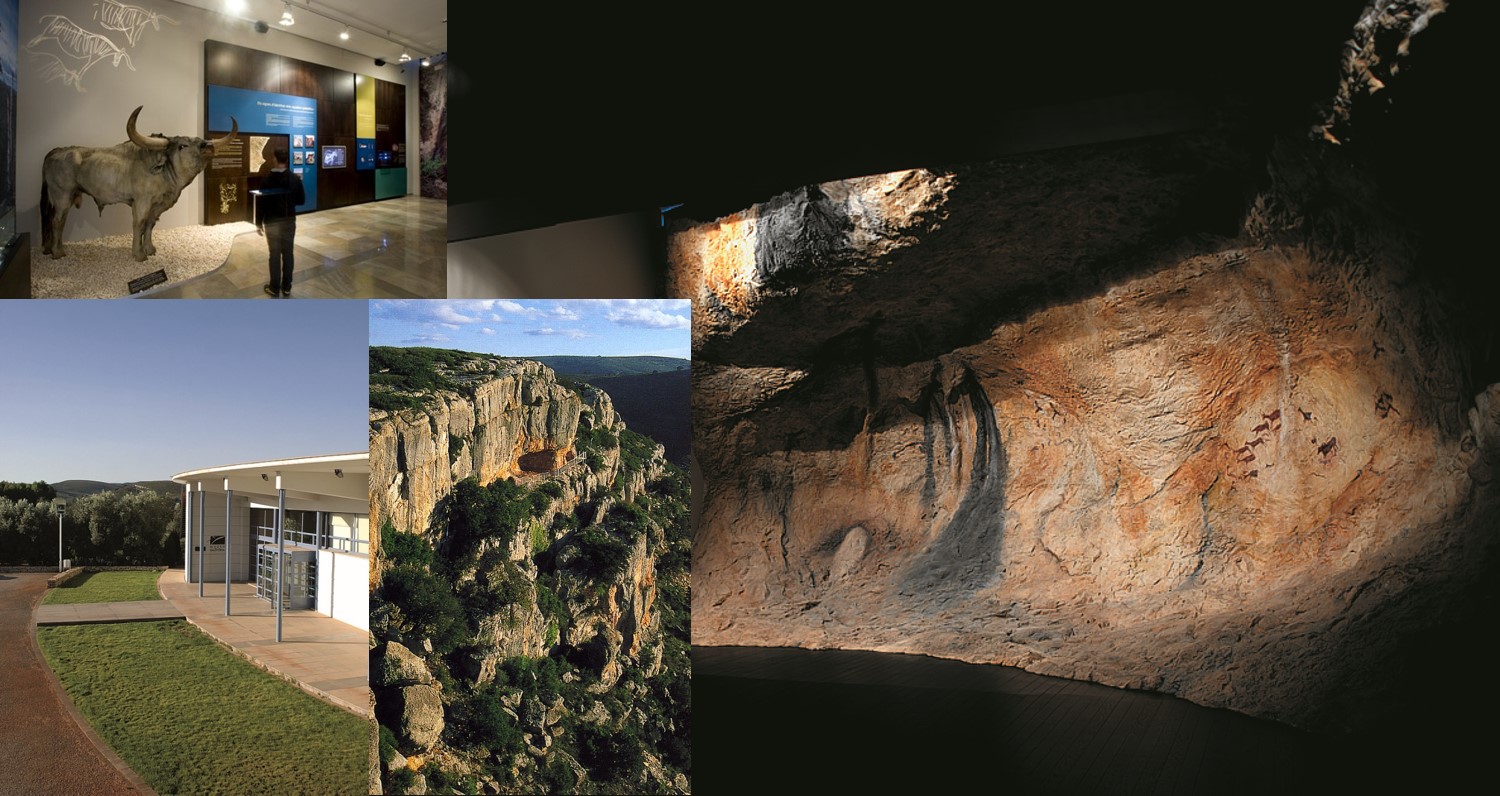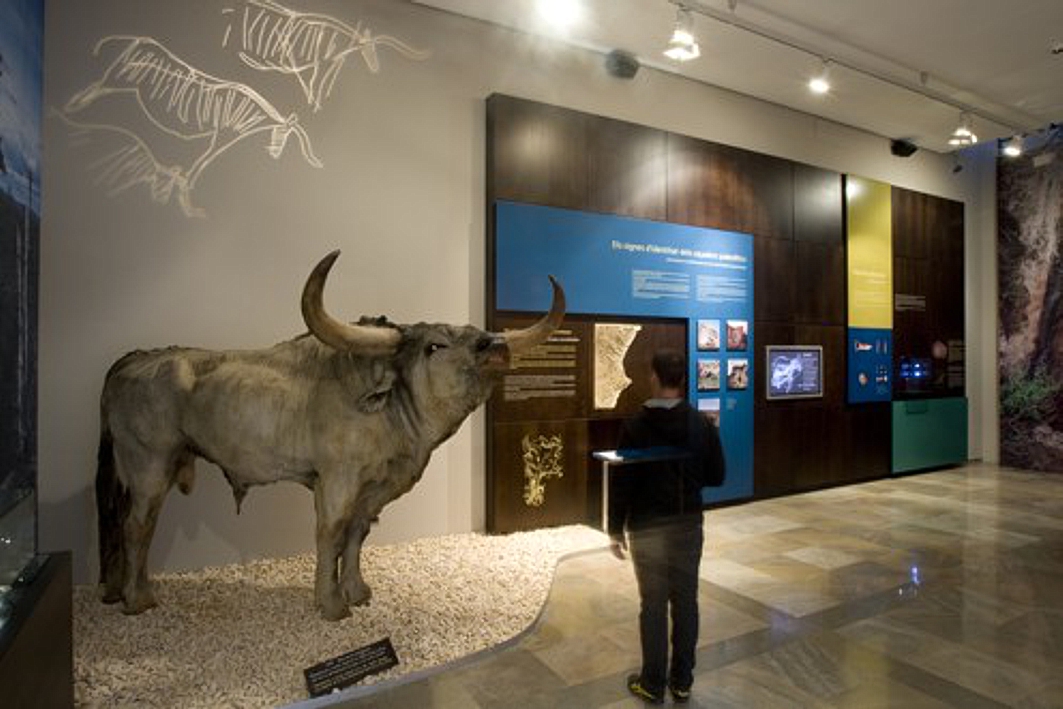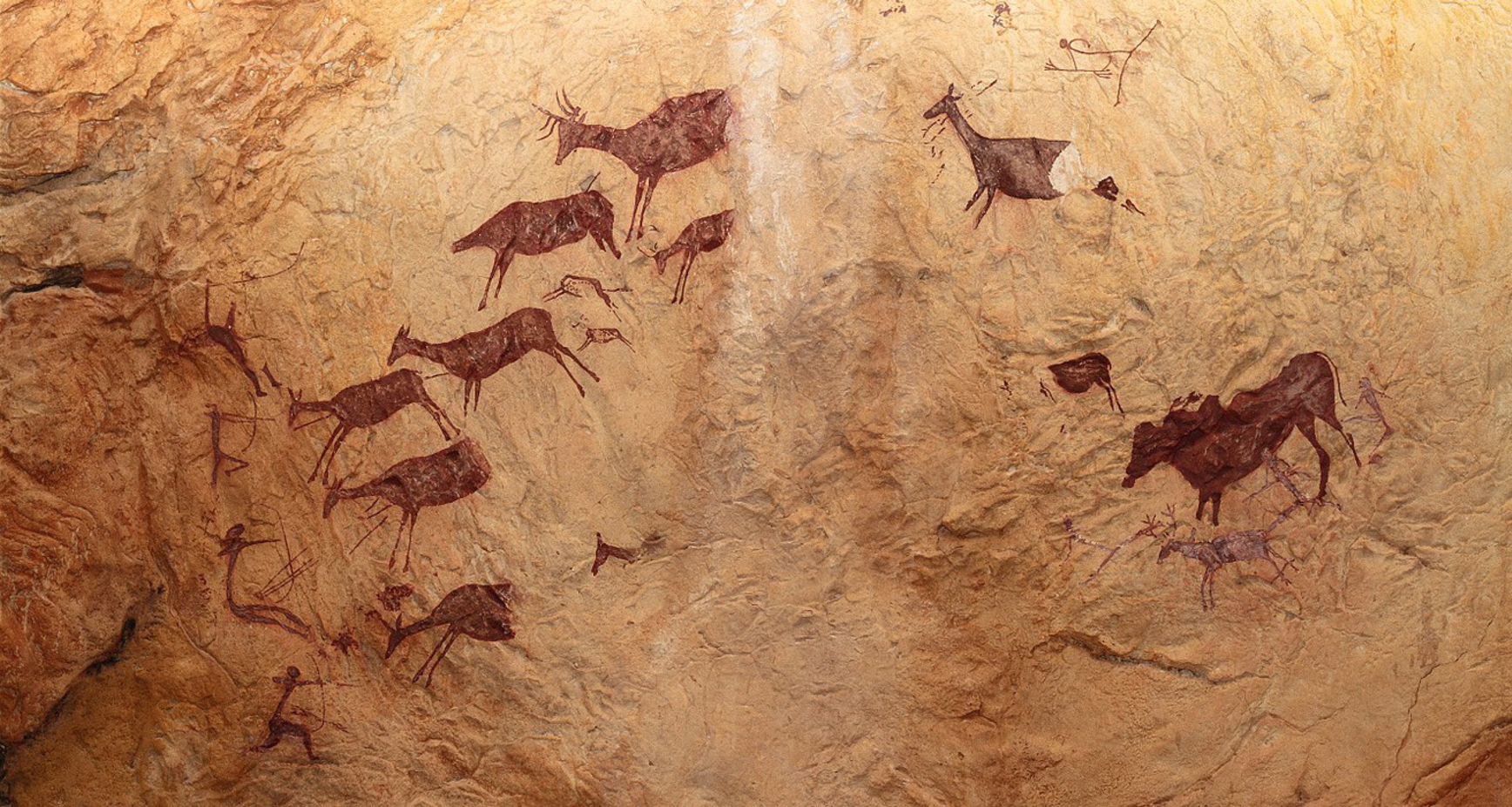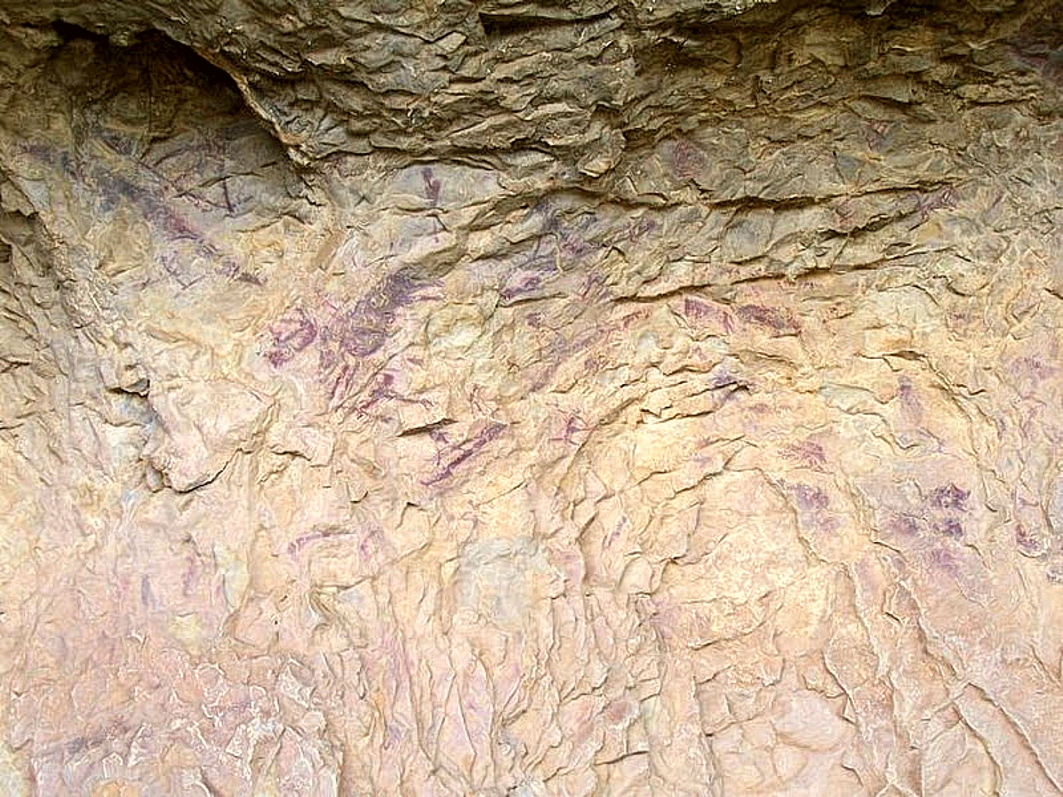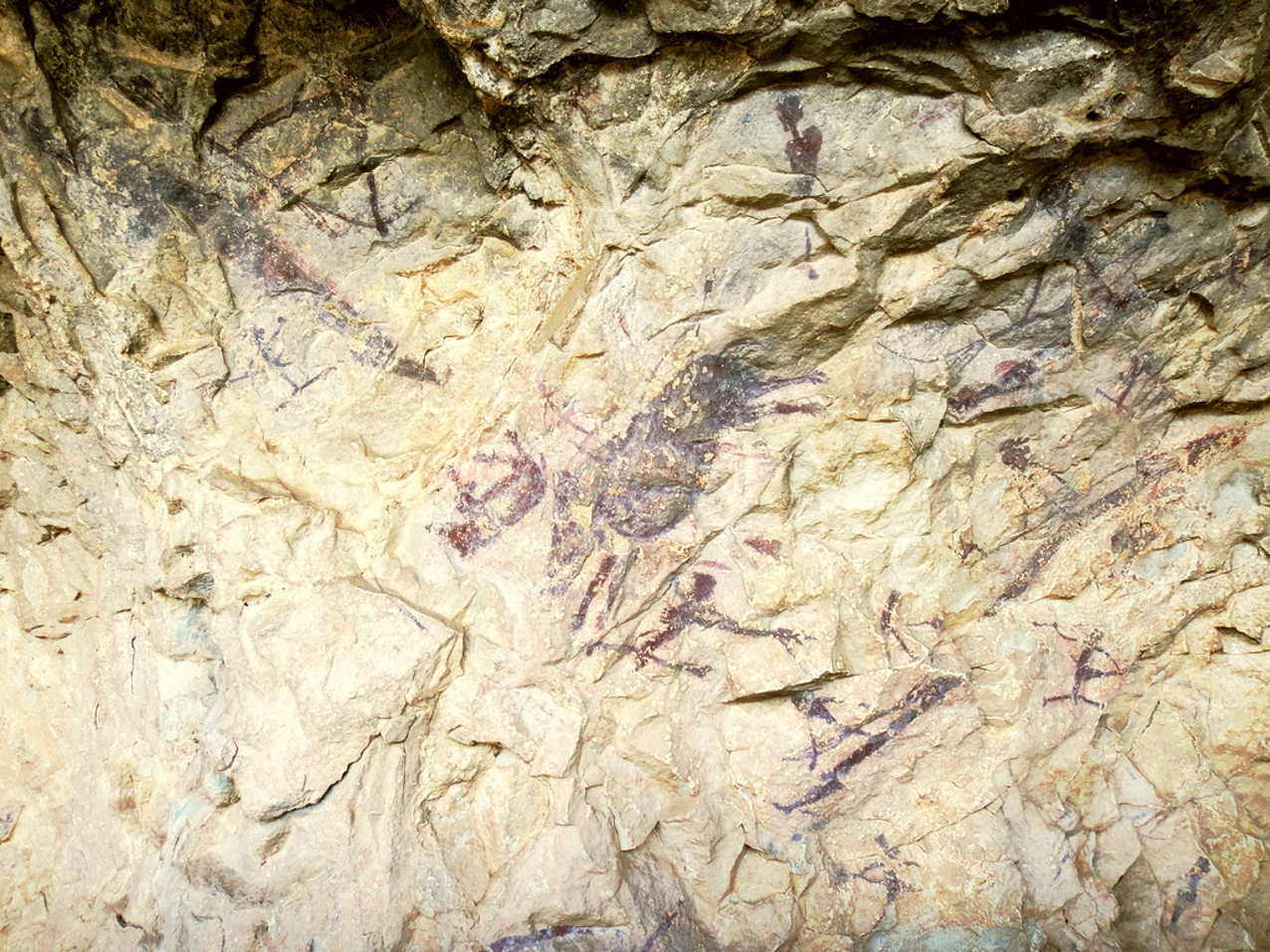Age of the artistic representations: Rock art in the region of Valencia was produced over a long period, from the Upper Palaeolithic, 26,000 years ago, to the Bronze Age, 3,500 years ago. It forms a long artistic record, helping to understand our Prehistory.
General description of the destination: Valltorta: Valltorta Ravine is about 20km long and is one of the main centres of rock art in the world. Currently some 27 sites are known, most of which have Levantine paintings. Their location in the ravine suggests that the ideological contents of the paintings was closely linked to the strategic nature of the area. Abric del Mas d’en Josep (Tírig): A series of rock-shelters on the left bank of the Valltorta, at 340m altitude. Cingle del Mas d’en Josep is 40m long and includes two shelters, with a total of 25 paintings, mostly belonging to the Levantine cycle. They have been known since 1917, but were not studied in detail until 2003. Rock-Shelter I has 13 motifs in different styles. At the top there is a group of three roughly-painted animals and a branching sign. They cannot be considered Levantine, but neither do they match the conventions of Schematic art. Below them a naturalistic bovine head is similar to others in the Maestrat group. On the right there is a series of figures, a person climbing a tree, an archer and two groups of arrows. There is another running archer and a splendid figure of a wild boar. The animal is naturalistic with prominent tusks and a raised tail. It has several arrows stuck in its back. The second Rock-Shelter has fewer figures and they are less well-conserved: two animals and an archer, with a deer-hunting scene on the right. Cingle del Mas d’en Josep is open to the public. Cova dels Cavalls (Tírig): The rock-shelter is in a cliff on the left bank of Valltorta Ravine. It was discovered by Albert Roda in February 1917 and listed as Historical-Artistic Monument in 1924. As one of the most visited sites in La Valltorta it has suffered frequent damage, some of it irreversible. It has some Schematic art and more abundant Levantine figures, with scenes, archers and a debatable woman figure. The scene of archers hunting deer is one of the most emblematic rock-art compositions; a group of archers are chasing a herd of nine deer, which are running away wounded by the archers’ arrows. The site was restored in 1998 and a full-scale replica of its original state can be viewed at Valltorta Museum. Coves dels Ribasells or del Civil (Tírig): A group of three rock-shelters on the left bank of Rambla de la Morellana, a tributary of Valltorta Ravine. It conserves a small sample of Schematic motifs and numerous Levantine paintings. The third shelter is the one with the most figures, above all a running horse, a dancing scene with four archers and especially a complex scene described by Juan Cabré as a “warrior dance”. This composition takes up over four metres of the wall, and is therefore one of the most complex scenes in the whole of Levantine art. In the centre, a sinuous vertical line separates two areas. Several groups of archers are facing each other on either side of the line; in the centre, two larger figures are back to back. All the figures were painted with the same conventions in dark red with some details in white. This composition is one of the first representations of fighting and is the most elaborate battle scene in Iberian rock art. Cova Remígia (Ares del Maestre): This shelter is in a cliff on the right bank of Gassulla Ravine at 920m altitude. It is 20m long and 9m deep, and was discovered in 1934 by Guillermo Espresati. A total of 759 motifs have been catalogued in six caves, belonging to seven stylistic phases. Levantine art predominates, but other figures can be attributed to Schematic art. In the former there are several hunting scenes; one of the most representative is the scene of wild boar-hunting in Cave IV. A group of six hunters chase boars wounded with arrows. Other animals appear to be dead, painted upside down. Other scenes show execution or punishment of human figures, like the archer who is lying on his back, wounded with arrows in Cave I, or the archer firing- squads, where groups of archers raise their bows against human figures with arrow wounds. Animal figures are also common, such as the herd of roe deer in Cave V and the representations of hives with bees flying around them. Among the Schematic paintings there are small human figures and animals like a goat with long horns in Cave III. The rock-shelter is guarded by a warden who lives in Mas de la Montalbana, where guided visits can be arranged. Coves de la Saltadora (Les Coves de Vinromà): A group of rock-shelters in a cliff 200m long, in Valltorta Ravine, opposite the confluence with Matamoros Ravine, at 340m above sea level. These sites were discovered in 1917, and the most detailed study was made by Eduardo Ripoll. Over 300 paintings are grouped in 26 rock-shelters, divided into two sectors. The North Sector consists of 18 shelters; the first ten contain mostly small animal figures. The central shelters are covered by a layer of clay, which hinders the interpretation of the figures. More figures are found in Shelters 16-18, mainly stags and archers painted in different styles. The South Sector has 8 rock-shelters. The first of these seems to have been painted red across its whole length, judging by the large stains of pigment that have been conserved. In the second shelter, the main figures are a naturalistic bovine, an archer with arrow wounds, two wild boar and further stylised archers. The third site has a deer-hunting scene, and the other shelters repeat the themes of stags and archers. The main scene shows four large stags, two in red and two in black; an archer hunting the animals is on the right. Beneath this, a scene of three human figures with adornments on their heads appear to be dancing or talking, according to Antonio Beltran’s interpretation. Abric de Centelles (Albocàsser): This site has 200 Levantine figures, in different groups. Located in the upper valley of the Valltorta, in Sant Miquel Ravine, it is the highest site in the Cultural Park. Most of the art seems to have been painted at the same time. They are large figures; some archers are 35cm tall. There are two main compositions. In one of them, a large group of archers are marching, holding their bows down, and wearing numerous body adornments. A group of women are carrying babies and possible domestic articles. In the main shelter, another group of women surround a possible corpse of a man. A few animals appear to be superimposed on the large human figures, and these must have been painted at a later date.
History of the site: The rock-shelters in the Valltorta-Gassulla area have been known since the early 20th century, and the first data about them was published in the 1910s and 20s, by local erudites and well-known prehistorians like Henri Breuil. Following the Spanish Civil War, new sites would often be found, and studied in doctoral theses and monographs. In 1998, the sites were listed as World Heritage by UNESCO, as part of the Rock Art of the Mediterranean Basin. Since then the sites have been studied more intensely and prepared for visitors, coordinated by Valltorta Museum, with the aim of managing rock-art heritage appropriately.
Museographic resources description: Valltorta Museum acts as a Visitors’ Centre, and provides information about the most interesting aspects of the Cultural Park. It was created in 1994 with the aim of conserving, studying and disseminating the values of the prehistoric rock art in the Region of Valencia, which was listed as World Heritage by UNESCO in 1998. The building, designed by the architects Miguel del Rey Aymat and Iñigo Magro de Orbe, is in Pla de l’Om, in Tírig, 500m from Valltorta Ravine. It has work rooms, like a laboratory, store-rooms and a library, and temporary and permanent exhibitions about the rock art in the region. The Museum is also the starting point for visits to the rock-shelters in the Valltorta-Gassulla area. Valltorta Museum carries out research projects on rock art, while the library has archives on the prehistoric art of the whole Region of Valencia.

